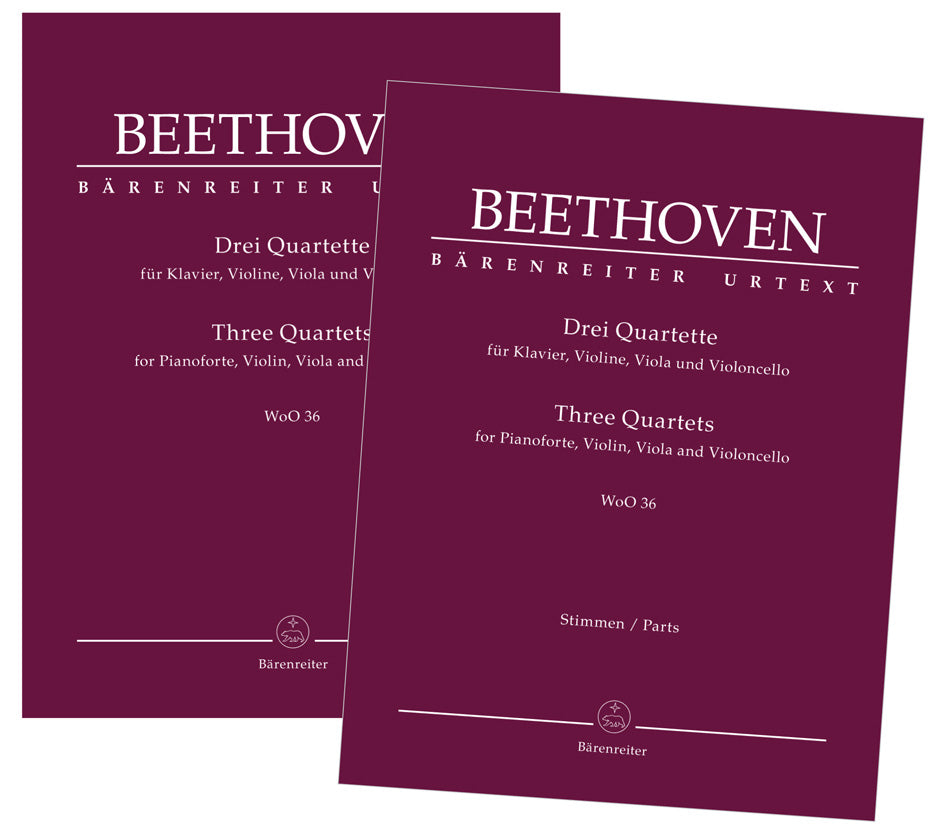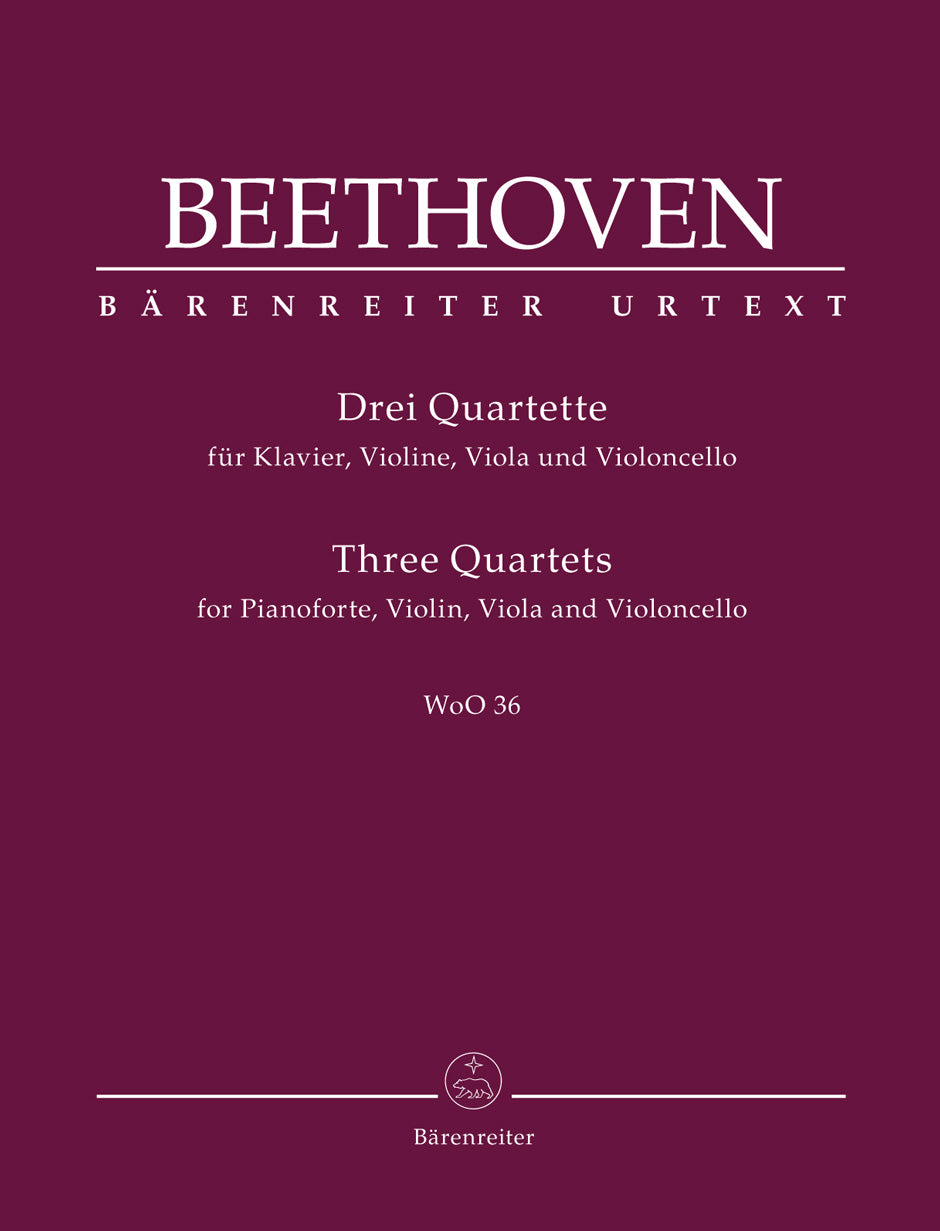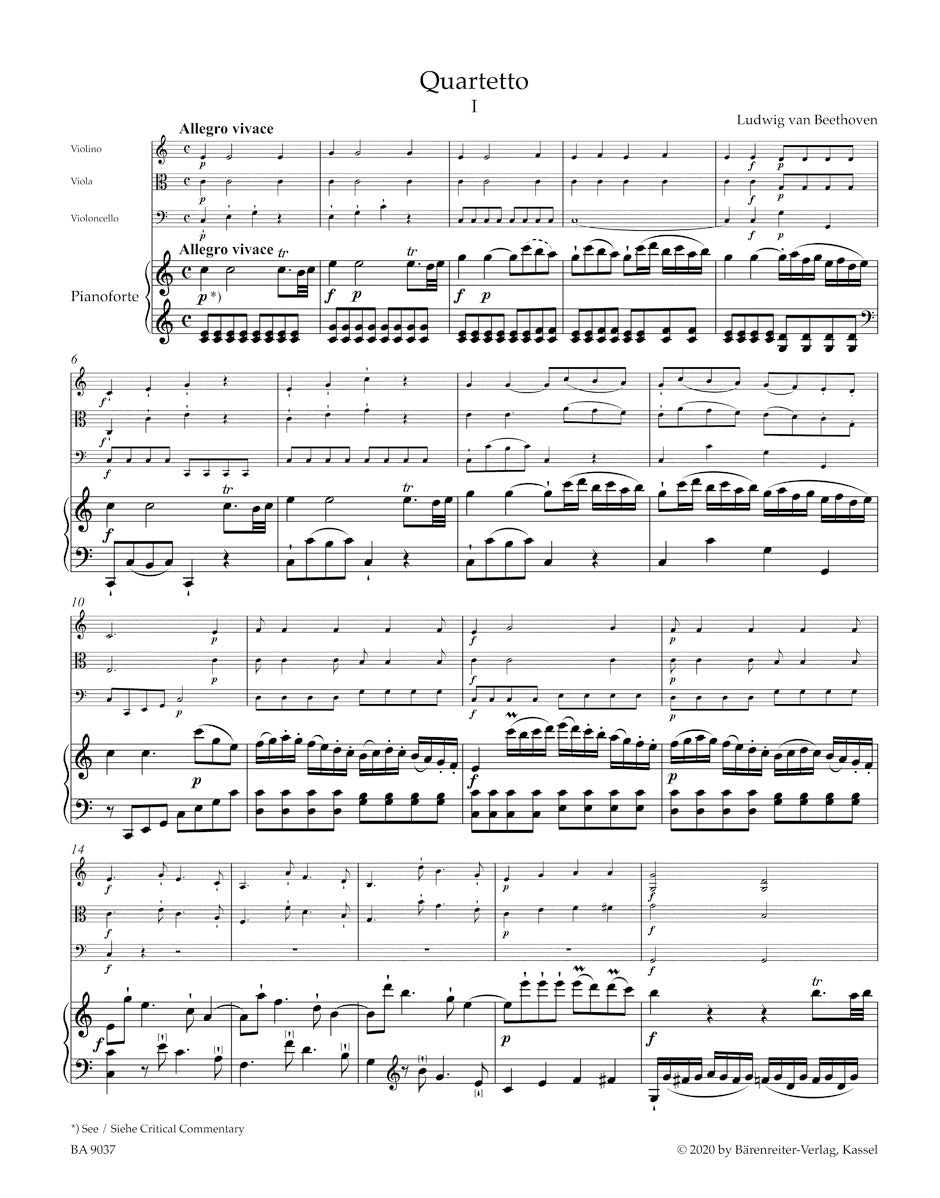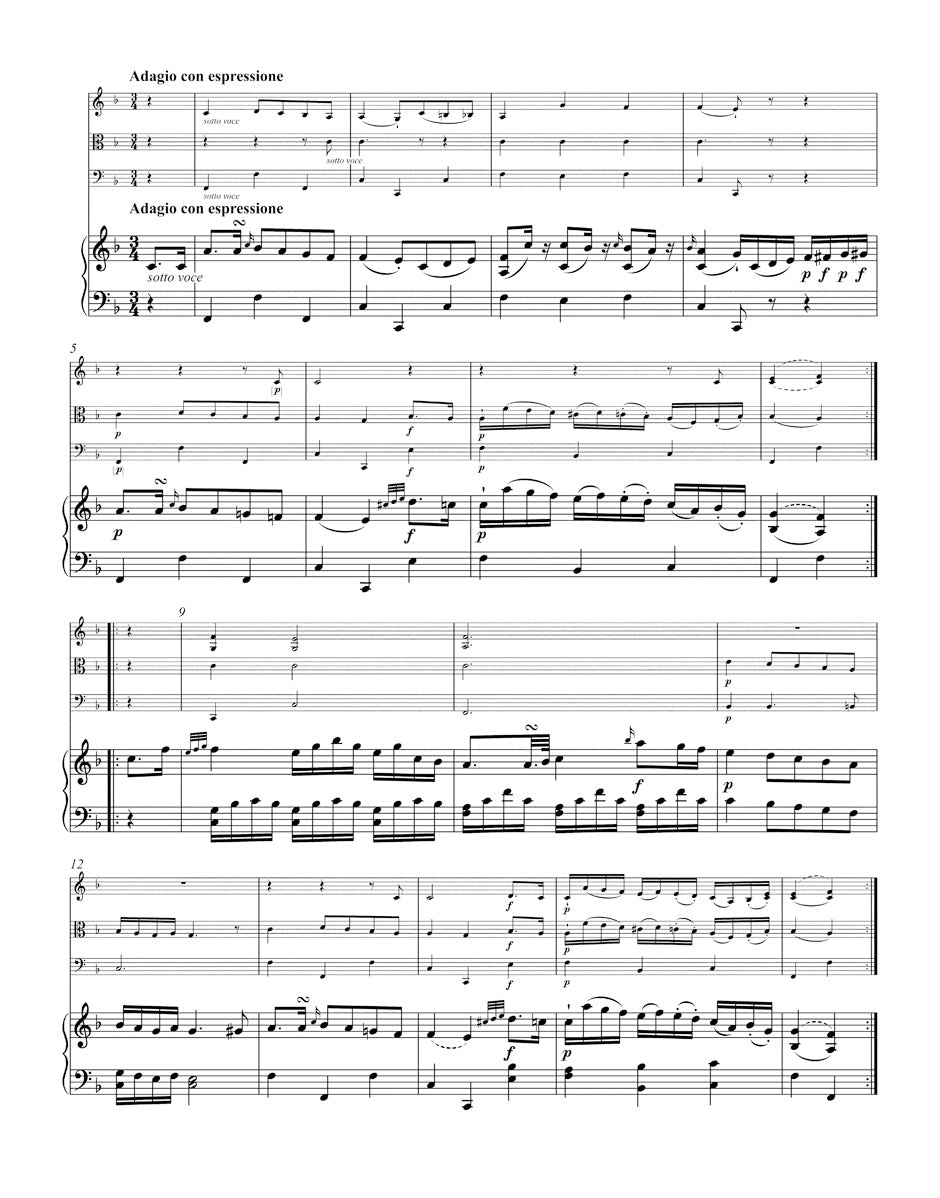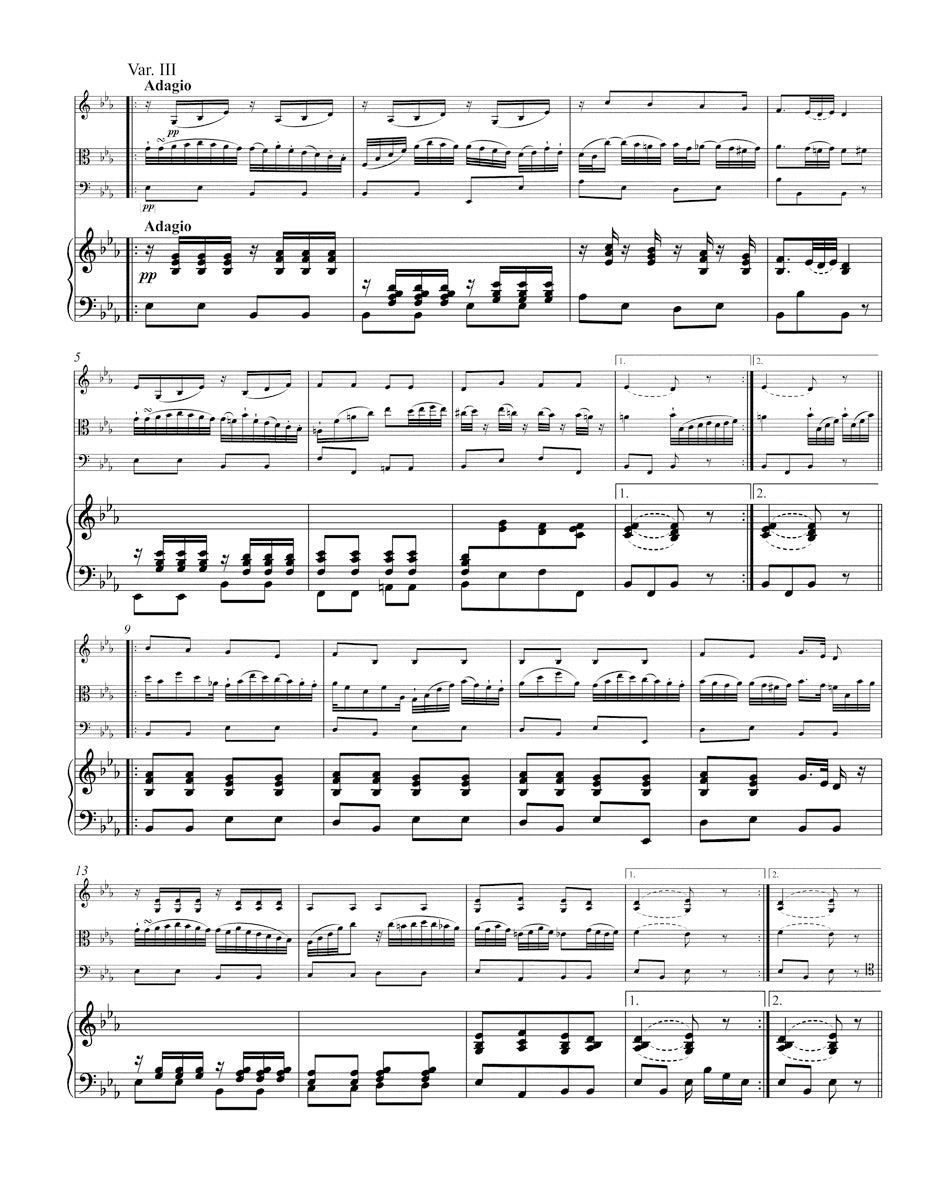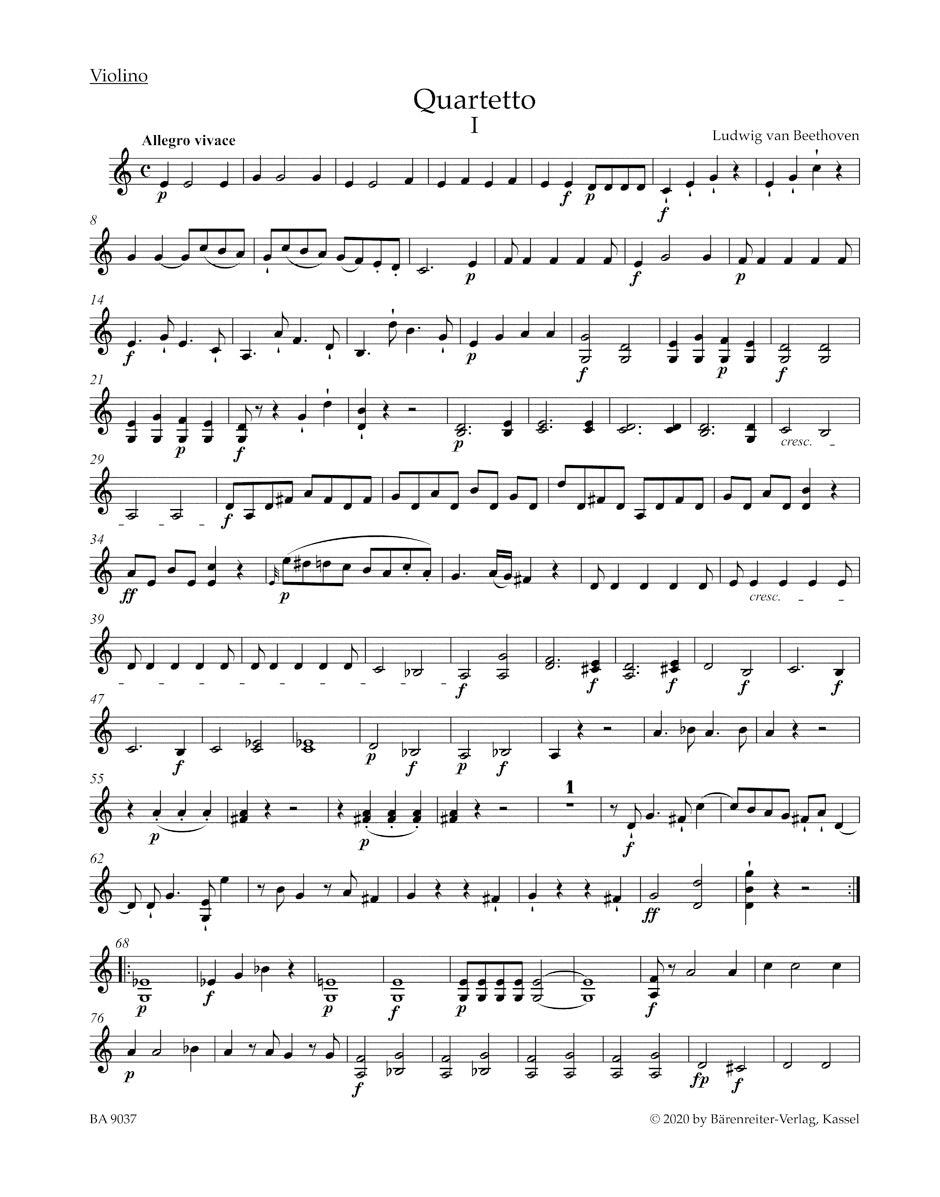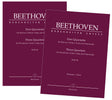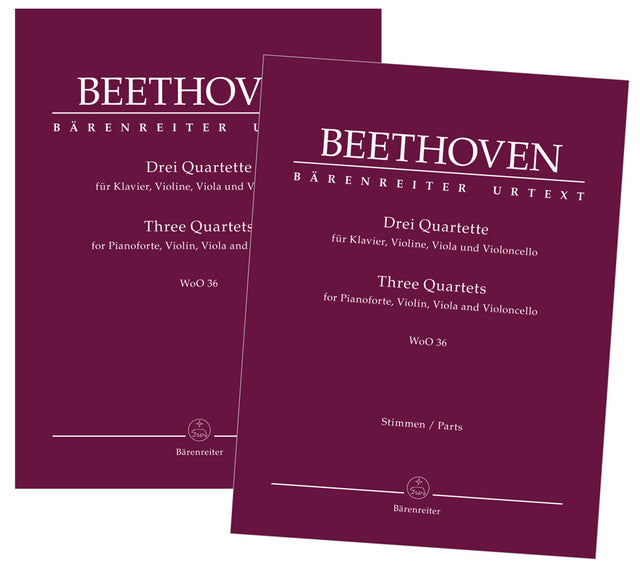Beethoven: 3 Piano Quartets, WoO 36
In stock and typically ships within 1 business day.
- Composer: Ludwig van Beethoven (1770-1827)
- Editor: Leonardo Miucci
- Format: Score & Set of Parts
- Instrumentation: Piano Quartet (Piano, Violin, Viola, Cello)
- ISMN:
- Size: 10.0 x 12.8 inches
- Pages: 135
- Urtext / Critical Edition
Description
When Beethoven wrote these three quartets he was 15 years old and a composition student of Christian Gottlob Neefe in Bonn. They reveal a strong Mozartian influence while the brilliant piano writing already gives a sense of the mature Beethoven. He may conceivably have written the works for the wealthy Mastiaux family in Bonn, as he gave piano lessons to one of the daughters and the other three siblings played violin, viola and cello. The sole source for the quartets is the autograph score which contains many overwritings that shed light on the works' original conception and possible alternative readings.
Although Beethoven never published the pieces in his lifetime and is not known to have performed them, he reused their melodic and thematic material in later compositions. Beethoven preserved the autograph score to the end of his days – perhaps an indication that the quartets meant a great deal to him. The first edition was published by Artaria in Vienna one year after his death, albeit with the pieces in a different order and with many errors in the musical text.
Bärenreiter's scholarly performing edition of the Piano Quartets WoO 36 is edited by the Italian pianist Leonardo Miucci, a specialist in the performance practice of keyboard music from this period. The edition not only presents the correct readings, it also sheds light on the young Beethoven's expressive notation and provides a plausible explanation for the distinction he made between dots and strokes to indicate staccato.
Works:
- Piano Quartet in E-flat Major, WoO 36, No. 1
- Piano Quartet in D Major, WoO 36, No. 2
- Piano Quartet in C Major, WoO 36, No. 3
Publishers use a lot of words to describe what they sell, and we know it can be confusing. We've tried to be as clear as possible to make sure you get exactly what you are looking for. Below are descriptions of the terms that we use to describe the various formats that music often comes in.
Choral Score
A score for vocalists that only contains the vocal lines. The instrumental parts are not there for reference. Generally, cheaper than a vocal score and requires multiple copies for purchase.
Facsimile
Reproductions of the original hand-written scores from the composer.
Full Score
For ensemble music, this indicates that the edition contains all parts on a single system (there are not separate parts for each player). In larger ensembles, this is for the conductor.
Hardcover
Hardbound. Generally either linen-covered or half-leather.
Orchestral Parts
Similar to a wind set, this is a collection of parts. In the case of strings, the numbers listed are the number of copies included, though generally these are available individually (often with minimum quantities required).
Paperback
When publishers offer multiple bindings (e.g. hardcover) or study scores, this is the "standard" version. If you're planning to play the music, this is probably what you want.
Performance / Playing Score
A score of the music containing all parts on one system, intended for players to share. There are not separate parts for each player.
Set of Parts
For ensemble music, this indicates that there are separate individual parts for each player.
Solo Part with Piano Reduction
For solo pieces with orchestra, this is a version that contains a piano reduction of the orchestra parts. For piano pieces, two copies are typically needed for performance.
Study Score
A small (think choral size) copy of the complete score meant for studying, and not playing. They make great add-ons when learning concertos and small chamber works.
Vocal Score
A score prepared for vocalists that includes the piano/organ part or a reduction of the instrumental parts.
Wind Set
For orchestral music, this is a collection of wind and percussion parts. The specific quantities of each instrument are notated.
With Audio
In addition to the printed music, the edition contains recordings of the pieces. This may be an included CD, or access to files on the internet.
With / Without Fingering (Markings)
Some publishers prepare two copies - a pure Urtext edition that includes no fingering (or bowing) suggestions and a lightly edited version that includes a minimal number of editorial markings.

